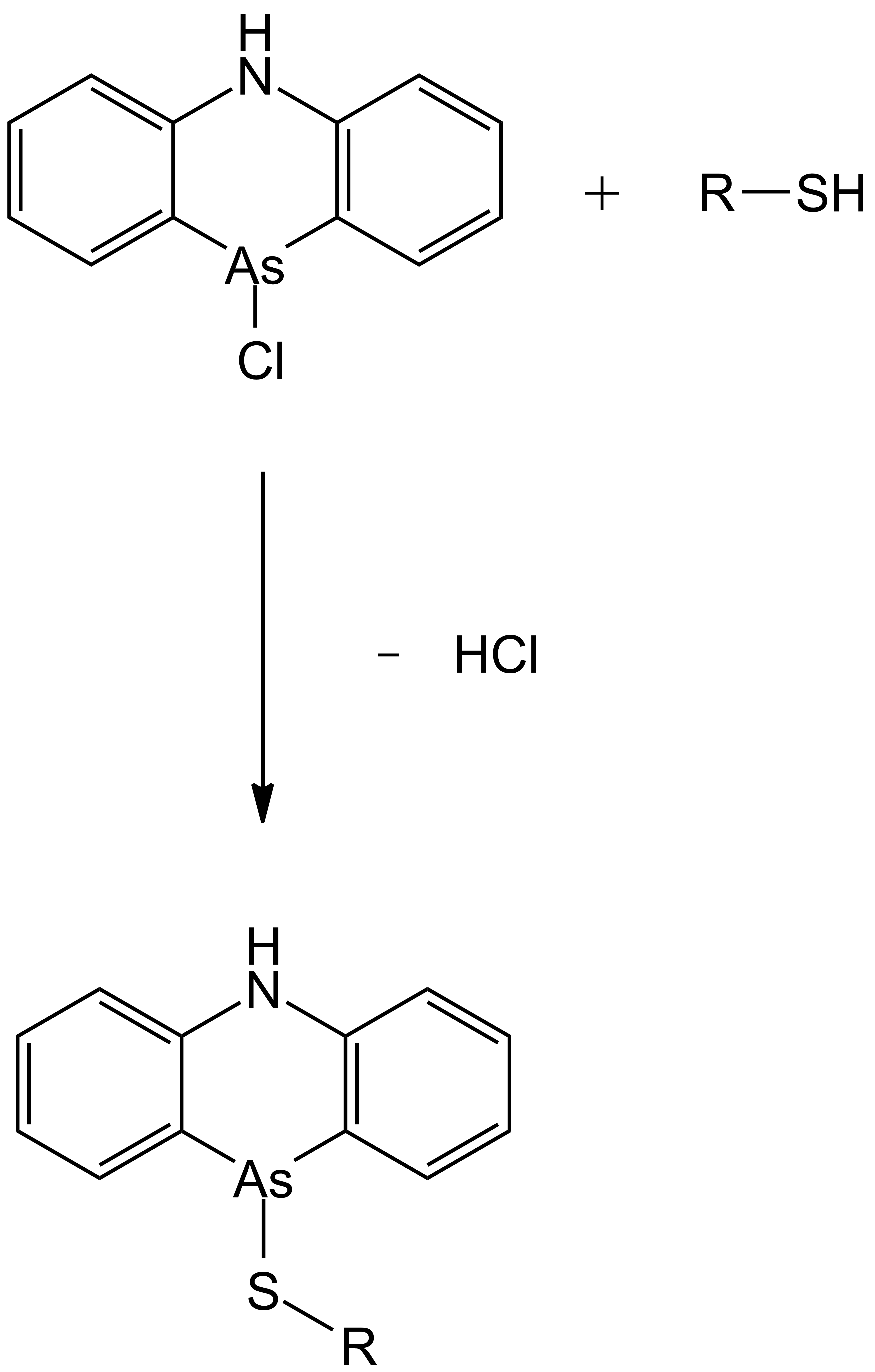Use of aliphatic thiols for on-site derivatization and gas chromatographic identification of Adamsite Scientific paper
Main Article Content
Abstract
The report describes the development of methods for rapid and simple identification of Adamsite in mobile laboratory conditions using a field gas chromatograph coupled with mass spectrometer. Adamsite is a chemical warfare agent with unique properties that cannot be analysed without conversion to a volatile derivative. Derivatization procedures with 5 aliphatic thiols (ethanethiol, 1-propanethiol, 2-propanethiol, 1-butanethiol and 1-hexanethiol) were developed and compared. The retention characteristics of the derivatization products, peak characteristics and the formation of unwanted artifacts in the chromatograms were monitored. The influence of the reaction media and the time dependence of the reaction were also objects of interest. Other investigated parameters were the optimal reaction temperature and the volume of the derivatization agent. Mass spectra of newly created substances that are not yet included in the chemical weapons related databases were recorded. With optimal reagents (1-butanethiol and 1-hexanethiol), the calibration procedures for analyte determination were subsequently developed, and the methods were verified during the Adamsite identification test in selected environmental and urban matrices.
Downloads
Metrics
Article Details

This work is licensed under a Creative Commons Attribution-NonCommercial-NoDerivatives 4.0 International License.

Authors retain copyright and grant the journal right of first publication with the work simultaneously licensed under a Creative Commons Attribution license 4.0 that allows others to share the work with an acknowledgement of the work's authorship and initial publication in this journal.
References
J. Beldowski, M. Brenner, K. K. Lehtonen, Mar. Environ. Res. 162 (2020) 105189 (https://doi.org/10.1016/j.marenvres.2020.105189)
H. Sanderson, P. Fauser, M. Thomsen, P. B. Sorensen, J. Hazard. Mater. 154 (2008) 846 (https://doi.org/10.1016/j.jhazmat.2008.05.059)
L. Polak-Juszczak, J. Szlinder Richert, Chemosphere 284 (2021) 131326 (https://doi.org/10.1016/j.chemosphere.2021.131326)
F. Francken, A. M. Hafez, Mar. Technol. Soc. J. 43 (2009) 52 (https://doi.org/10.4031/MTSJ.43.4.3)
M. Czub, J. Nawala, S. Popiel, Aquat. Toxicol. 230 (2021) 105693 (https://doi.org/10.1016/j.aquatox.2020.105693)
B. Radke, L. Jewell, S. Piketh, J. Namiesnik, Crit. Rev. Environ. Sci. 44 (2014) 1525 (https://doi.org/10.1080/10643389.2013.782170)
S. Franke, Lehrbuch der Militärchemie: Band 1, Militärverlag der Deutschen Demokratischen Republik, Berlin, 1977
V. Nagarajan, R. Chandiramouli, Chem. Phys. 535 (2020) 110782 (https://doi.org/10.1016/j.chemphys.2020.110782)
E. W. J. Hooijschuur, C. E. Kientz, U. A. T. Brinkman, J. Chromatogr., A 982 (2002) 17 (https://doi.org/10.1016/S0021-9673(02)01426-7)
K. Kinoshita, A. Noguchi, K. Ishii, A. Tamaoka, T. Ochi, T. Kaise, J. Chromatogr., B 867 (2008) 179 (https://doi.org/10.1016/j.jchromb.2008.03.033)
T. Kondo, R. Hashimoto, Y. Ohrui, R. Sekioka, T. Nogami, F. Muta, Y. Seto, Forensic Sci. Int. 291 (2018) 23 (https://doi.org/10.1016/j.forsciint.2018.07.032)
H. Nagashima, T. Kondo, T. Nagoya, T. Ikeda, N. Kurimata, S. Unoke, Y. Seto, J. Chromatogr., A 1406 (2015) 279 (https://doi.org/10.1016/j.chroma.2015.06.011)
STANAG 4632: Deployable NBC Analytical Laboratory (2005)
AEP-66: NATO handbook for sampling and identification of biological, chemical and radiological agents (SIBCRA) (2015)
S. Hanaoka, K. Nomura, T. Wada, J. Chromatogr., A 1101 (2006) 268 (https://doi.org/10.1016/j.chroma.2005.10.028)
K. Schoene, H. J. Bruckert, H. Jürling, J. Steinhanses, J. Chromatogr., A 719 (1996) 401 (https://doi.org/10.1016/0021-9673(95)00751-2)
R. Haas, Environ. Sci. Pollut. Res. 5 (1998) 2 (https://doi.org/10.1007/BF02986365)
L. I. Szekeres, B. Gyurcsik, T. Kiss, Z. Kele, A. Jancsó, Inorg. Chem. 57 (2018) 7191 (https://doi.org/10.1021/acs.inorgchem.8b00894)
S. Hanaoka, E. Nagasawa, K. Nomura, M. Yamazawa, M.Ishizaki, Appl. Organomet. Chem. 19 (2005) 265 (https://doi.org/10.1002/aoc.790)
B. Muir, S. Quick, B. J. Slater, D. B. Cooper, M. C. Moran, C. M. Timperley, W. A. Carrick, C. K. Burnell, J. Chromatogr., A 1068 (2005) 315 (https://doi.org/10.1016/j.chroma.2005.01.094)
R. Haas, A. Krippendorf, Environ. Sci. Pollut. Res. 4 (1997) 123 (https://doi.org/10.1007/BF02986314)
J. Tornes, A. Opstad, B. Johnsen, Sci. Total Environ. 356 (2006) 235 (https://doi.org/10.1016/j.scitotenv.2005.03.031)
H. Niemikoski, M. Söderström, H. Kijlunen, A. Östin, P. Vanninen, Anal. Chem. 92 (2020) 4891 (https://doi.org/10.1021/acs.analchem.9b04681).





